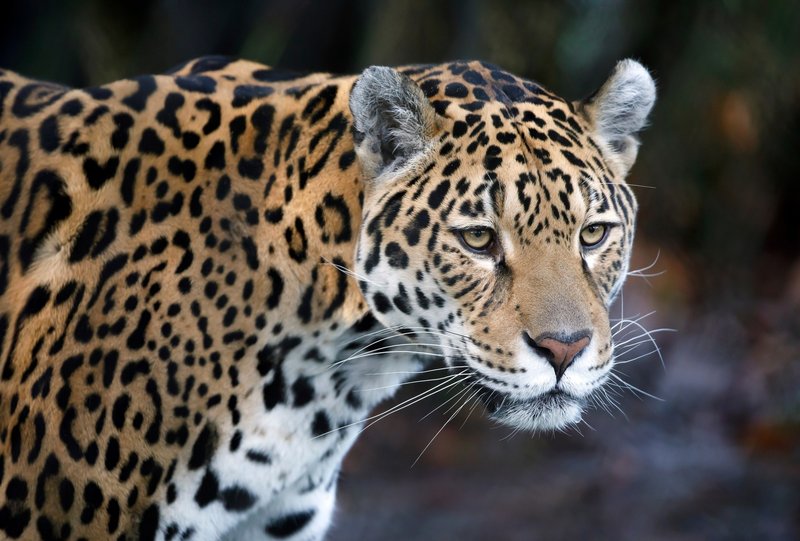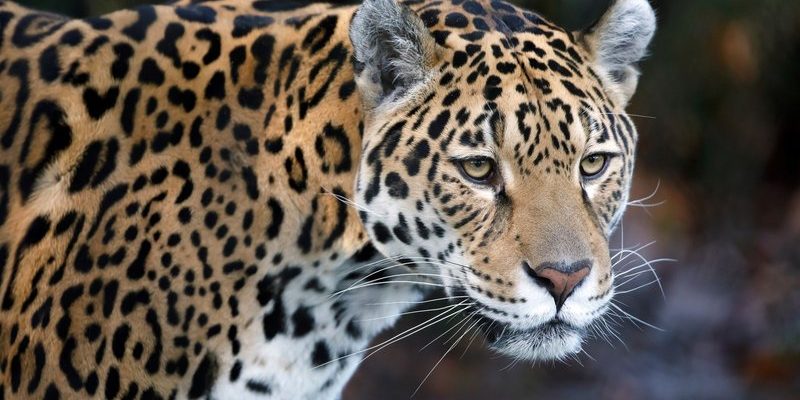
Like a Swiss Army knife, jaguars possess a toolkit of adaptations that help them tackle the challenges of their surroundings. From their stunning physical abilities to their crafty hunting techniques, they make the most out of tough situations. Let me explain a bit more about how jaguars manage to endure in such varied and often unforgiving habitats.
The Adaptations of Jaguars
Jaguars are built for survival—and their physical traits are a huge part of that. First off, their powerful bodies give them an edge. Strong muscles allow them to take down prey much larger than themselves. This isn’t just for show; it’s essential when they’re hunting in environments where food can be scarce.
But wait, there’s more! Jaguars have incredibly strong jaws that allow them to crush bones, enabling them to eat prey that others might leave behind. Their unique bite technique is also impressive; they often go for the skull of their prey, delivering a single, fatal blow. This method is especially useful in environments filled with tough-skinned animals, like turtles, which can be found in some habitats.
Furthermore, their camouflaging fur helps them remain hidden. With a coat adorned in beautiful rosettes, they can blend effortlessly into the dappled sunlight and shadows of their surroundings. This is critical in both the jungle, where thick foliage is standard, and in dryer areas, where they can hide amongst rocks and grasses.
Hunting Strategies and Diet
Let’s talk about how jaguars eat—because their hunting methods are nothing short of fascinating. Jaguars are solitary hunters, meaning they prefer to go it alone rather than work in groups. This is a big advantage in their environments, as it allows them to be stealthy and less conspicuous. Their hunting technique is almost like a game of hide and seek; they quietly stalk their prey until they’re close enough to pounce.
Now, what do they eat? Jaguars are opportunistic feeders, which means they adapt their diet based on what’s available. They’re not picky! From deer and capybaras to smaller animals like birds and fish, they can take advantage of whatever food sources are around them. In water-rich areas like the Amazon River, jaguars even hunt for fish and caimans. Talk about variety!
This dietary flexibility is particularly important in harsh environments. When food becomes limited, their ability to switch targets means they won’t go hungry easily. Plus, their immense strength allows them to tackle prey that might be too dangerous or difficult for other predators.
Water: The Lifeblood of Survival
Water is essential for survival, and jaguars know it. They are strong swimmers, which sets them apart from many other big cats. In fact, they often seek out water sources like rivers and lakes, not only for drinking but also as strategic hunting grounds. Many of their prey, including fish and capybaras, are found in these wet environments.
This swimming ability allows jaguars to spread out over larger areas when looking for food, especially in flood-prone regions. In the rainy season, food sources can be displaced, but their adaptability shines through. They can navigate through swamps and flooded areas with ease while others might struggle.
Moreover, their affinity for water also means they can cool off in hot weather. When the sun beats down, a dip in a cool river or a romp through the rain can help them regulate their body temperature, adding another layer to their survival strategy.
Territorial Behavior and Habitats
Jaguars are known for their territorial nature. They’ll establish a home range that can cover vast distances, depending on the availability of food and water. This territory serves as their safe space, where they can hunt and raise their young without interference from other predators.
The size of their territory can vary widely. In more densely populated areas, such as the rainforests, a jaguar’s range might be smaller because prey is plentiful. However, in harsh environments like arid landscapes, they might roam much farther to find food and water. Their keen sense of smell and sight helps them navigate these territories effectively, marking their presence with scratch marks and scent markings along trees and bushes.
What’s really interesting is how they adapt their behavior according to their habitat. In regions with high human activity, for example, they might become more nocturnal to avoid encounters. This allows them to continue hunting while reducing the risks associated with humans encroaching on their territory.
Conservation Challenges
Despite their incredible adaptability, jaguars face numerous threats today. Habitat loss is a significant issue, primarily due to deforestation and agricultural expansion. As jungles are cleared, jaguars lose their homes and hunting grounds, pushing them into smaller areas where competition for food increases.
Additionally, human-wildlife conflict often arises when jaguars prey on livestock, which can lead to retaliation from farmers. These interactions can be disastrous for jaguar populations and underscores the need for effective conservation strategies.
Conservationists are working hard to create protected areas and corridors that allow jaguars to move freely between habitats, reducing the risk of inbreeding and ensuring a healthier gene pool. By understanding the importance of jaguars in their ecosystems and the threats they face, we can all play a role in their survival.
The Role of Jaguars in Ecosystems
Lastly, let’s talk about why jaguars are essential to their ecosystems. As apex predators, they help maintain the balance of animal populations. Their hunting keeps herbivore numbers in check, which in turn protects vegetation and contributes to the health of their habitats.
Without jaguars, the various prey species could overpopulate, leading to overgrazing and a decline in plant diversity. This ripple effect highlights the importance of these majestic cats—not just for their beauty but for the health of the entire ecosystem.
In summary, jaguars are remarkable survivors. Their ability to adapt to harsh environments, coupled with their impressive hunting strategies and ecological significance, makes them truly special creatures. To protect jaguars is to protect the intricate web of life in which they play a crucial role.
Whether they’re swimming in rivers or prowling through jungles, jaguars continue to amaze us with their resilience. As we learn more about them, we can start to appreciate just how vital they are and what we can do to safeguard their future.

